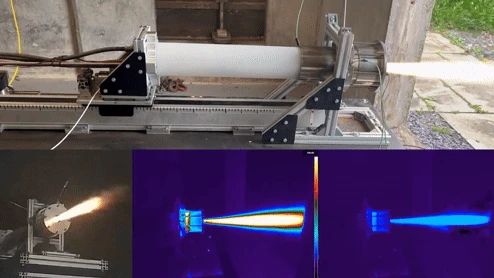Revolutionizing rocket Technology: The Autophage rocket Engine
Satellite constellations and space debris are increasingly congesting earth‘s orbital zones, prompting researchers to seek innovative solutions to mitigate the growing problem. Addressing this concern, a team of researchers has unveiled a groundbreaking concept that could potentially revolutionize the field of rocket propulsion.
Introducing the Ouroboros-3
The Ouroboros-3, an autophage rocket engine, marks a significant advancement in rocket technology. Named after the ancient Egyptian symbol of a snake eating its own tail, the Ouroboros-3 utilizes its own body as an additional fuel source, signifying a departure from traditional rocketry methods.
Autophage Rocketry
Conventional rockets store their fuel in separate stages, leading to the creation of additional space debris once the stages are depleted. In contrast, the autophage rocket engine minimizes its impact by utilizing its own structure as a propellant, effectively decreasing the production of orbital space junk.
Operational Mechanism and Performance
Upon ignition, the Ouroboros-3 utilizes gaseous oxygen and liquid propane as its primary propellants. Subsequently, its high-density polyethylene plastic tubing encasement contributes to the propulsion, serving as an innovative approach to fuel utilization.
Test-firings have demonstrated the Ouroboros-3’s capability to generate substantial thrust. Moreover, the rocket‘s structure can burn a significant portion of its own mass as propellant, paving the way for increased efficiency and reduced environmental impact.
Engineering Potential
The University of Glasgow Engineering professor and project lead, Patrick Harkness, envisions a promising future for autophage rocket engines. The ability to make structural mass available for the payload presents a compelling prospect for enhancing future rocket designs.
Technological Advancements
The team’s successful control of the autophage rocket‘s burn, including the capability to restart, pulse in an on/off pattern, or be throttled, highlights significant technological progress. These advancements represent foundational steps towards developing a fully-functional autophage rocket engine.
Future Implications
While the Ouroboros-3 remains an early prototype, the team aims to scale future iterations to support the delivery of payloads into orbit without contributing to atmospheric clutter. This transformative approach could potentially pave the way for alternative rocket designs, offering solutions to existing costly and cluttering problems prevalent in the space industry.
Harkness emphasizes the potential applications of autophage rockets in delivering small payloads, such as nanosatellites, into orbit. This development aligns with the industry‘s pressing need for sustainable and efficient propulsion methods, steering the space sector towards a more environmentally-conscious future.
Concluding Thoughts
With the potential to alleviate issues related to space debris and orbital congestion, autophage rocket engines represent a notable stride towards sustainable and responsible space exploration. As the possibilities for this technology continue to unfold, it offers a strong foundation for advancing the future of space travel and celestial endeavors.
By embracing innovative concepts such as the autophage rocket engine, the space industry can navigate towards a more sustainable trajectory, mitigating the potential risks associated with orbital debris while unlocking new frontiers of space exploration.
Source: popsci








No Comments